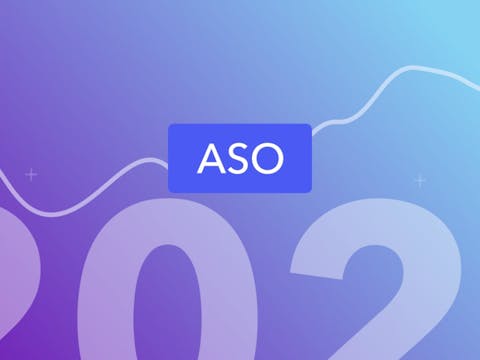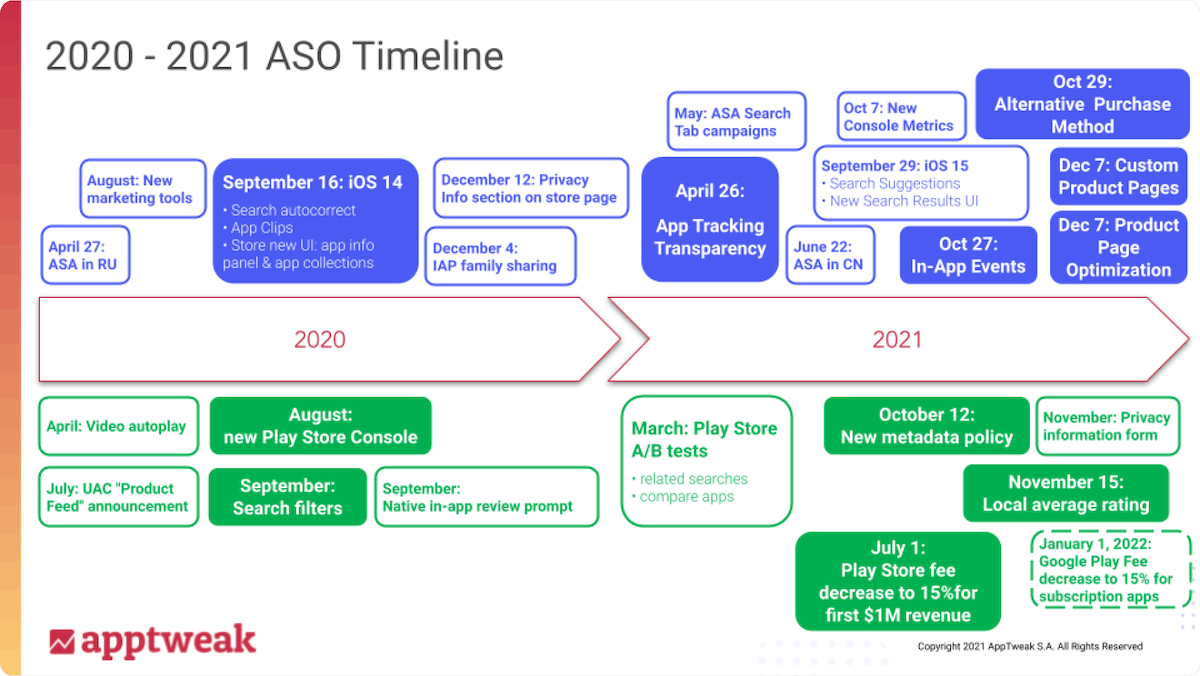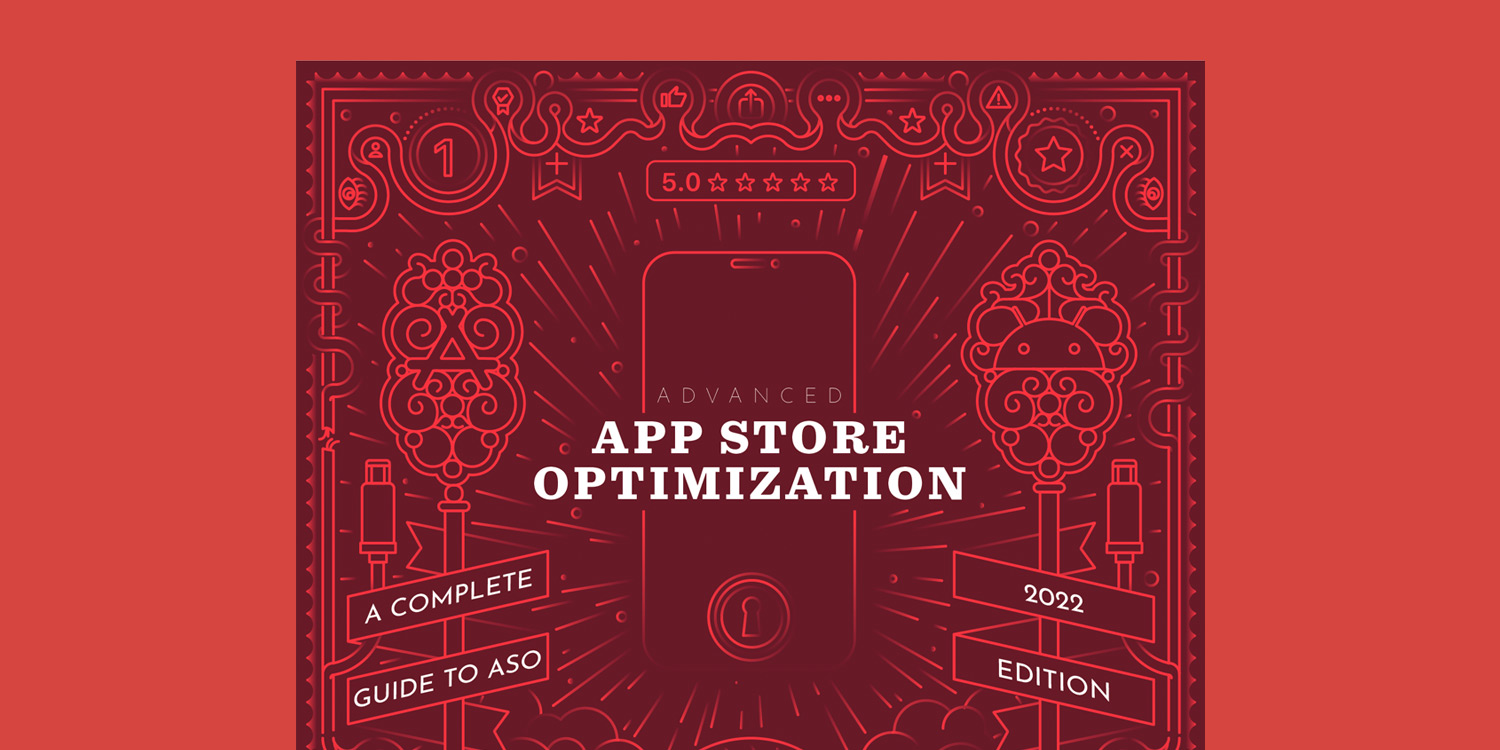
2021 Recap: A Major Year in ASO
2021 was a much-anticipated year for app marketing, with the app ecosystem starting the year on an all-time high! At the same time, we also spent some of 2021 wondering when the economy would be able to restart “after” COVID-19, and the majority of expert conversations revolved around when Apple would enforce its privacy changes and how much impact they would have.
Yet more announcements and changes made 2021 an even bigger year than expected and one that will probably be considered as a turning point in App Store Optimization’s role in app marketing. As we get to the end of the year, let’s review the most important ASO changes of 2021.
 2020-2021 ASO Timeline by AppTweak.
2020-2021 ASO Timeline by AppTweak.
1. Impact of iOS privacy changes on ASO & app marketing
The beginning of 2021 was characterized by many conversations around Apple’s looming App Tracking Transparency framework and the threat of many apps losing access to the majority of user device identifiers, which are crucial to deterministic ad campaigns. Although ATT was only released with iOS 14.5 on April 26, and its progressive rollout meant that most apps only experienced its full impact from June onwards, developers started preparing new marketing strategies from the very beginning of the year.
Learn more about Apple’s App Tracking Transparency framework and its impact on ASO.
With expectations that paid user acquisition (UA) performance campaigns would experience a severe drop in efficiency and become more expensive, app marketers showed a newfound interest in ASO, which manifested in 3 main ways:
- More app companies started opening ASO positions or increasing the size of their ASO team, with the goal of mitigating—or even canceling out—their losses in paid UA with a new influx of organic users. In turn, this led to an increase in the competition for organic search visibility on the App Store, with ASO practitioners simultaneously needing to educate executives on the differences between ASO and paid UA.
- Many companies increased theshare of Apple Search Ads (ASA) in their paid UA mix, as Apple’s ad network is partially exempted from the rules of ATT (users had to opt-out instead of opt-in, which was then replaced by opt-in with a much friendlier consent screen than the ATT consent prompt system). This trend was also encouraged by the launch of Search tab campaigns in May, and Apple adding China to the list of countries where Apple Search Ads are available in June.

Search Tab Campaigns. Source: Apple.
- Companies investigated the depth and granularity of data available in App Store Consoles and ASO tools, as the installment of ATT also led to losses in user attribution capabilities with mobile measurement platforms. With the challenge of measuring the efficiency of marketing efforts with probabilistic methods and/or uplift measurements, marketers were faced with the problem of reconciling data points and discrepancies from different sources.
In summary, privacy changes introduced by Apple in the first half of the year started to expose the interdependencies and synergies between paid UA and ASO, at the benefit of the latter. However, this trend suddenly accelerated in the second half of the year as Apple announced iOS 15 and started rolling out new functionalities.
2. iOS 15: A new era for App Store Optimization
“When Apple closes a door, they open a window.” This saying was used by several industry experts after Apple unveiled its plans for new App Store marketing functionalities for iOS 15 during WWDC in June. Although their releases were eventually delayed to the last quarter of the year, in-app events,product page optimization, andcustom product pages all immediately stirred up new conversations about how developers should prepare to utilize the App Store a lot more for marketing, as Apple made great efforts to promote its marketplace as the central stakeholder in app discovery again.
However, some not-so-small changes were introduced even before the release of these functionalities: The release of iOS 15 on September 29 saw the introduction of search suggestions, now adding a new layer of complexity to keyword optimization, as well as the removal of screenshots for already installed apps in search results, possibly redistributing the cards in the battle between apps for search visibility. This second case also added to the value of in-app events, as these may replace the screenshots in search results for apps a user has already installed, therefore helping popular apps maintain their edge over competitors in search.
 Search suggestions on the App Store (also available on AppTweak).
Search suggestions on the App Store (also available on AppTweak).
New App Store Connect metrics were also introduced soon after the release of iOS 15, including a breakdown of downloads into new downloads and redownloads, as well as a measurement of app updates and proceeds, all broken down by source.
This change, though not as anticipated by marketers, added considerable value to the role ASO practitioners sometimes play in analyzing data beyond pure organic results. This is especially the case in the context of other data sources, like mobile measurement providers (MMPs), losing reliability and companies now looking for multiple sources of data rather than considering one single provider as the source of truth.
The biggest changes were still yet to come, as Apple released in-app events on October 27, and product page optimization and custom product pages on December 7:
- First, regarding product page optimization, the feature, an A/B testing tool native to the App Store, was not revolutionary (a similar tool had already existed on Google Play for several years). However, it was long-awaited given the considerable added value of being able to evaluate the conversion uplift of creative changes on the App Store. Furthermore, the A/B testing system also represented a possibility for marketers to now update screenshots and app previews outside of new app build submissions, even though their assets would still have to undergo review by Apple Editors to validate compliance with store guidelines.
- As for in-app events and custom product pages, both functionalities represented a new stage in App Store marketing, as they both offered new opportunities for engagement and retargeting campaigns leading to the App Store, and put a relative end to the principle of one single store page to promote an app to all users in one country or region.
Learn all about iOS 15 with our Conversion Optimization Content Hub.
Not to underestimate changes on Google Play in 2021
Turning to the Play Store, it may seem that Google had a much quieter 2021 at first glance. Nevertheless, Google’s multiple changes throughout the year should not be underestimated, from the expansion of the LiveOps beta to the impact of new metadata policies or changes in the average rating formula:
Google Play LiveOps beta
While in-app events made a larger commotion on iOS, it’s worth noting Google Play was the first of the two stores to enable certain app developers to promote in-app content with the LiveOps beta. Initially only available to mobile games applicants, Google appears to have started responding to Apple’s launch by allowing more developers into the closed beta, and updating its policy around LiveOps to also allow apps to advertise digital sales, which Apple clearly does not allow (in fact, some app developers shared their in-app event submissions for Black Friday were rejected by Apple reviewers on the ground they were not promoting any particular in-app content but merely offering discounts). Although unclear when Google will make LiveOps available to all app developers, these changes seem already well underway in 2021.
Play Store metadata policy updates
Meanwhile, the most notable change on Google Play in 2021 was a new metadata policy that played on two specific dimensions:
The reduction of Google Play app titles from 50 to 30 characters contributes to the ever-increasing convergence between the App Store and Play Store, and may highlight Google’s will to force developers to simplify app titles to avoid false information and also facilitate work for its algorithm.
At the same time, multiple new rules surrounding app icons, titles, and short descriptions (such as forbidding the use of certain words like “free” or “#1”) are more clearly targeted at preventing developers from using dark patterns at the expense of consumers.
While the change is more than welcomed in principle and a good thing for ASO, the early implementation showed that, in practice, Google’s review algorithms do not distinguish between different semantic situations. For instance, an app using the word “hands-free” or “first love” may be flagged by the algorithm despite not using these terms to promote a price or claim a particular rank. As a result, it is likely that ASO practitioners will look for circumvention strategies in 2022.
Read this blog to learn about important changes Google Play made to its metadata policy in 2021
Average rating formula: from global to local
Last but not least, Google’s change in apps’ average rating formula has been a little-commented change that could nevertheless have considerable impacts. With more users declaring they give fair weight to an app’s average rating when considering whether to download it, Google’s switch from a global to local average rating is likely to have both positive and negative impacts on Play Store conversion.
- The positive side is that apps are now more likely to be rewarded by better conversion in the key markets where they invest most of their resources and should (hopefully) get the best consumer satisfaction.
- However, the negative side is that app launches in new markets will be more susceptible to suffer from issues early on, and will require more time to reach a good level of visibility and conversion. Additionally, a dangerous side effect of this change may come from SEO: Apps with a low average rating in the United States due to a limited presence there may appear to have lower ratings on the web than on the Play Store, due to web crawlers for SEO often focusing on US pages.
47b6.png) Comparing Web and Play Store ratings for Deezer in France.
Comparing Web and Play Store ratings for Deezer in France.
4. More changes to the App Store/Google Play are in the making
Finally, a few changes that started taking form in 2021 and will carry over in 2022 concern privacy on Google Play and new policies regarding app store fees:
- Concerning store privacy, Google has begun to follow in Apple’s footsteps; the Play Store is set to display a new section on store listing pages in February 2022 that informs consumers of the data collected and used by apps and third parties. To that end, developers have been able to provide Google with the information to be displayed here via a form available since November. Furthermore, Google announced access to device identifiers for Kids’ apps will be strictly restricted starting next year, a change that could be the first step towards a stricter policy for all apps and advertisers, taking inspiration from Apple’s ATT.
- Finally, both Apple and Google have started moves regarding app store fees in 2021. In July, Google first announced it would decrease its fee from 30% to 15% for the first million US dollars of developers’ revenue, before announcing later in the year that it would simplify its fee policy for apps using a subscription-based revenue model to 15% entirely, starting January 1, 2022. Meanwhile, Apple dealt with the fallouts of its legal battle with Epic, announcing a new policy that authorizes developers to inform their iOS consumers of methods of payment alternative to Apple IAP. However, Apple also eventually obtained a suspension on the injunction that allowed developers to enable in-app alternatives to the IAP system. Despite the stay on the injunction, other legal procedures, including new legislation in South Korea, led both Apple and Google to start contemplating the possibility of claiming a fee on all app revenues, even for purchases made outside of their proprietary systems.
It appears 2022 is set to be another important year for App Store Optimization; so stay tuned for our predictions for ASO in 2022!

